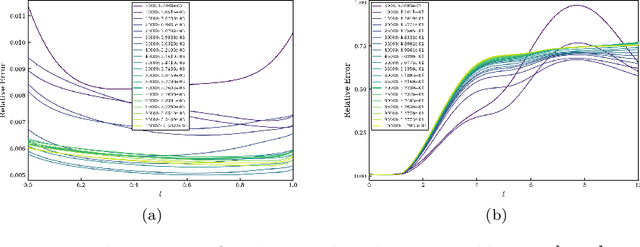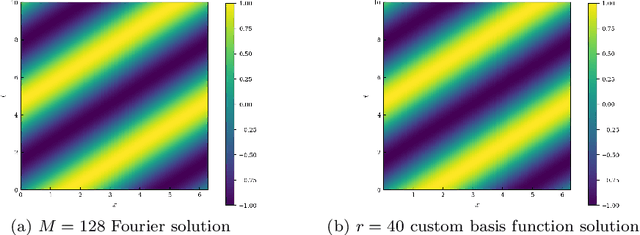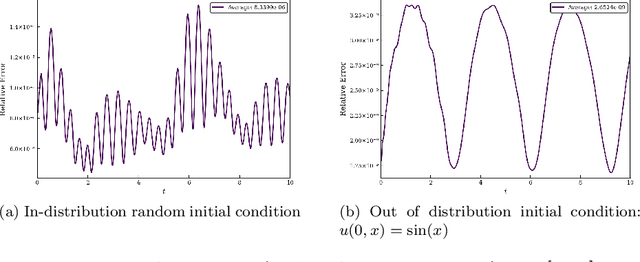Brek Meuris
What do physics-informed DeepONets learn? Understanding and improving training for scientific computing applications
Nov 27, 2024Abstract:Physics-informed deep operator networks (DeepONets) have emerged as a promising approach toward numerically approximating the solution of partial differential equations (PDEs). In this work, we aim to develop further understanding of what is being learned by physics-informed DeepONets by assessing the universality of the extracted basis functions and demonstrating their potential toward model reduction with spectral methods. Results provide clarity about measuring the performance of a physics-informed DeepONet through the decays of singular values and expansion coefficients. In addition, we propose a transfer learning approach for improving training for physics-informed DeepONets between parameters of the same PDE as well as across different, but related, PDEs where these models struggle to train well. This approach results in significant error reduction and learned basis functions that are more effective in representing the solution of a PDE.
Machine-learning custom-made basis functions for partial differential equations
Nov 09, 2021



Abstract:Spectral methods are an important part of scientific computing's arsenal for solving partial differential equations (PDEs). However, their applicability and effectiveness depend crucially on the choice of basis functions used to expand the solution of a PDE. The last decade has seen the emergence of deep learning as a strong contender in providing efficient representations of complex functions. In the current work, we present an approach for combining deep neural networks with spectral methods to solve PDEs. In particular, we use a deep learning technique known as the Deep Operator Network (DeepONet), to identify candidate functions on which to expand the solution of PDEs. We have devised an approach which uses the candidate functions provided by the DeepONet as a starting point to construct a set of functions which have the following properties: i) they constitute a basis, 2) they are orthonormal, and 3) they are hierarchical i.e., akin to Fourier series or orthogonal polynomials. We have exploited the favorable properties of our custom-made basis functions to both study their approximation capability and use them to expand the solution of linear and nonlinear time-dependent PDEs.
 Add to Chrome
Add to Chrome Add to Firefox
Add to Firefox Add to Edge
Add to Edge